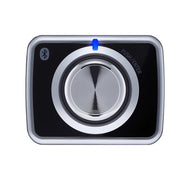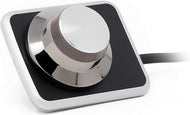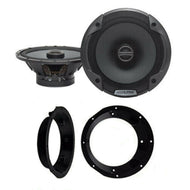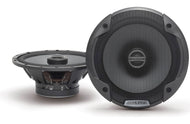Car Speakers, Subwoofers and Amplifiers
-
Listening to your music in high quality is a big part of enjoying your drive to the fullest. By replacing your factory speakers and adding a subwoofer, you can listen louder, with better clarity and a greater range of sound. Running these components through an amplifier ensures that they're getting the power needed for optimal performance without distortion.
Features
Car Speakers — After-market car speakers recreate your music's vibrant highs and midranges. There are two types of car speakers, based on how the tweeters (responsible for highs) and woofers (for midranges) are housed:
- Coaxial — Usually sold in pairs, coaxial speakers pack multiple components such as tweeters and woofers into each unit. They split the audio frequencies coming from your receiver multiple ways and direct them to each component. The number of ways the sound is split is a good indication of the clarity and detail your speakers will produce.
- Component — At the higher end, component speakers are a separate unit for each tweeter and woofer, allowing you to place them in your car wherever you prefer for the best sound. Installing your tweeters near head level results in clearer highs.
Subwoofers — A subwoofer provides the deep, rich lows and bass that give your music an authentic depth of sound. Forget the idea that subwoofers are only for trunk-rattling, bass-heavy music: they can improve all genres of music. In fact, not all of them are housed in the trunk anymore. You now have the option of compact, game console-sized subs that can fit under a car seat and include a built-in amp, making installation easy.
Amplifiers — To wring every drop of sound quality possible out of your audio system (especially power-hungry subs), you'll need an amplifier that can produce more power. Car amplifiers range from mono amps that power just one channel — usually a subwoofer — to up to five-channel amps.
Installation — Make sure that the speakers you choose will properly fit into the area of your car (door panels or rear window dash) you plan to install them. Similarly, traditional-sized subwoofers need to be housed in a fitted enclosure in your trunk for optimal sound. Amplifiers are smaller but still require wiring kits and adapters to connect with your speakers and subs. Geek Squad® can help you determine the perfect setup for your car, install it and ensure all components are connected properly.
Power Handling — Measured in watts, power handling capacity indicates the maximum power signal that a speaker or subwoofer can accept. Feeding a speaker more power than it can handle can damage the speaker, but many speakers with high power handling capacities actually require more power to sound their best. For best results, choose speakers that can handle approximately the maximum output of your receiver and amplifier. Peak power capacity indicates the maximum power your speakers can only handle for short bursts. More importantly, nominal power (RMS) is the amount of continuous power the speaker can handle throughout use.
 BUY NOW, PAY LATER. Starting at 0% APR
BUY NOW, PAY LATER. Starting at 0% APR 









